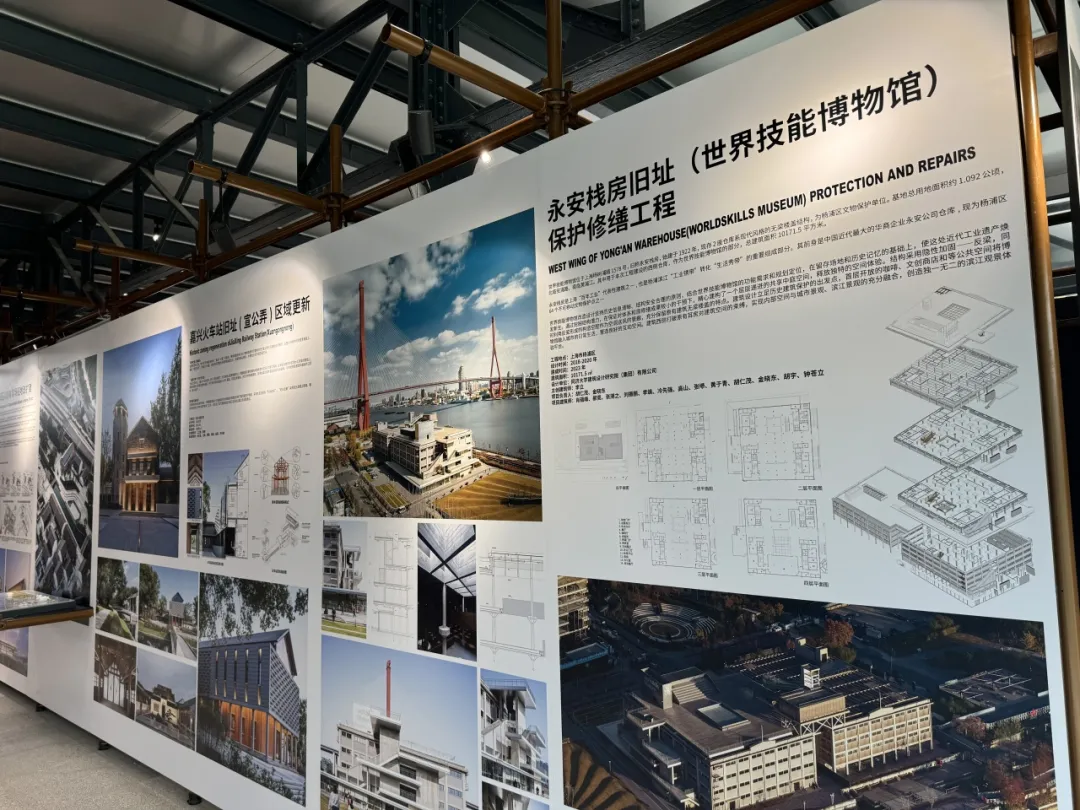"Indigenous Design - Urban Renewal Tour Exhibition" Opens at Yangpu November 22,2024
Urban renewal is an integral part of a city's evolution, characterized by its organic, ongoing, and long-term nature. On November 20, the "Indigenous Design - Urban Renewal Tour Exhibition" opened at the Minghua Sugar Refinery in Yangpu Riverside. Initiated by Academician Cui Kai, Chief Architect of China Architecture Design & Research Group (CADG), the exhibition is designed to showcase significant works and design concepts from recent urban renewal practices in recent years.

The event was jointly hosted by CADG, Tongji Architectural Design (Group) Co., Ltd., the College of Architecture and Urban Planning at Tongji University, East China Architectural Design & Research Institute Co., Ltd., and Shanghai Yangpu Binjiang Investment and Development (Group) Co., Ltd.
Architecture that "Communicates": A Romantic Fusion of History and Modernity
Urban organic renewal is the intricate process of weaving into the existing urban texture, where the blend, integration, enhancement, and repurposing of old and new structures take precedence over the mindless demolition and new construction.
In Shanghai's time-honored "Hengshan Road-Fuxing Road Historic and Cultural Area (Hengfu Area)", a stylish flagship store nestled within a verdant garden, welcomes fashion aficionados and visitors with its innovative conceptual space. On a corner plot, four historical buildings are strategically positioned around a garden featuring ancient trees. The challenging restoration work, a reflection of ICCF Group's commitment to sustainable fashion, employs natural materials to evoke a timeless sense of elegance.

Throughout the restoration and partial reconstruction, existing building materials were maximized, and historical architectural elements were meticulously restored and supplemented. For example, the original brick and stone facade of the former fire station were meticulously recreated and restored, wooden staircases were recreated to reflect historical styles, and reclaimed wood was used for furniture, all of which complement the understated natural tones and materials within the ICCF store. Original balcony tiles discovered during the renovation were cleaned and relaid with care. Details such as terrazzo floor tiles or wooden doors and windows at the entrance of the original garden villa were restored to their historical specifications, in compliance with cultural relic protection standards.
In a garden that has stood for over a century, a space where fashion and culture intersect has emerged, merging the historical ambiance with the modern grace of the ICCF brand. Wu Wei, Executive Partner of gmp von Gerkan, Marg and Partners Architects, said, "This is a renovation project of an old building in Hengfu Area. We aimed to restore the building's original character, including the red bricks and detailed cornices. Integrating the two buildings from the 1990s with the older structures in a harmonious manner was a significant challenge. The garden, designed by professional designers, has been transformed into a public space with a Southern French charm, inviting the public to immersive themselves in it."
Revitalizing Industrial Relics: A Centennial Warehouse Transforms into a Museum
Urban renewal aims to invigorate and enliven cities. Facing the multifaceted challenges of urban renewal, particularly in leveraging industrial historical remnants, this project offers insights into potential solutions.
The WorldSkills Museum, situated at 1578 Yangshupu Road and formerly known as "Wing On Textile Storehouse", was first established in 1922. The two remaining warehouses, featuring modern style slab structures, are designated as cultural heritage sites in Yangpu District. Wing On Textile Storehouse is a symbol of Shanghai's century-long industrial history and a key component in the transformation from an industrial belt into a life belt in Yangpu Riverside.

The museum's renovation adheres to the principle of preserving historical integrity and ensuring structural safety and rationality. It integrates the functional requirements and planning objectives of the WorldSkills Museum, revitalizing this modern industrial heritage site while maintaining the site's historical memory. By exploiting the structural potential with minimal intervention in the existing system and prior restorations, a meticulously designed, progressive shared atrium space has been introduced, providing a unique spatial experience.
Exhibitor Chen Wenfeng said, "Wing On Textile Storehouse represents a significant starting point in Shanghai's industrial history. Urban renewal has allowed it to be showcased in a state of fusion between old and new. It has now become an internet-famous check-in location, especially with the integration of new technological elements, which draws more young people. The WorldSkills Museum here also introduces new technological and cultural dynamism, endowing the dormant building with a new identity and showcasing the depth of history."

Urban renewal is an endless journey, with design explorations, periodic reviews, and sharing of experiences being highly valuable. It signifies not only the continuous renewal of the urban architectural environment but also the evolution of architects' and collaborators' social awareness and professional expertise. Urban renewal entails a long-term companionship between architects and the city. Interested citizens can visit the Minghua Sugar Refinery at 415 Anpu Road, Yangpu District, Shanghai until December 10 for the exhibition.